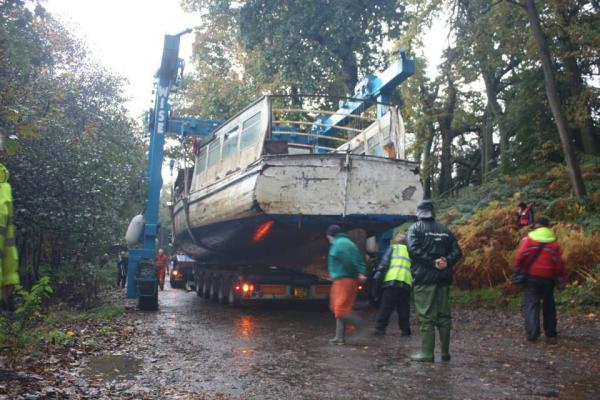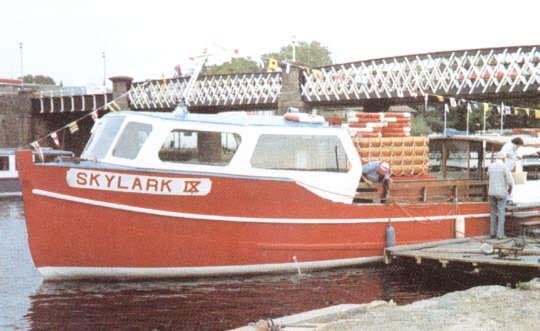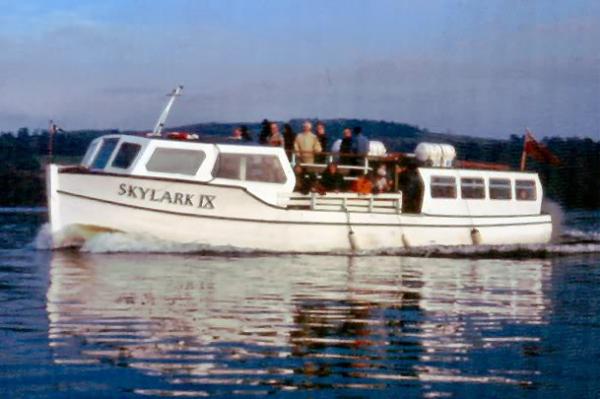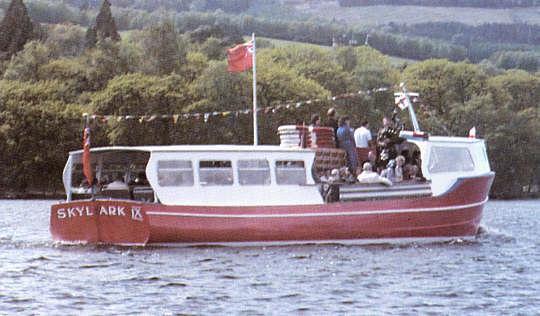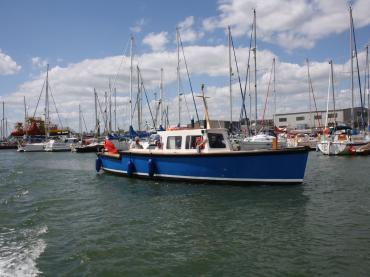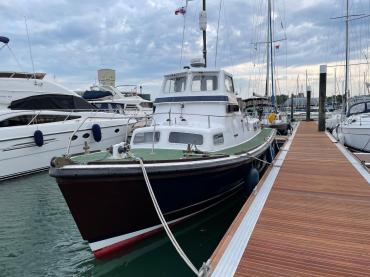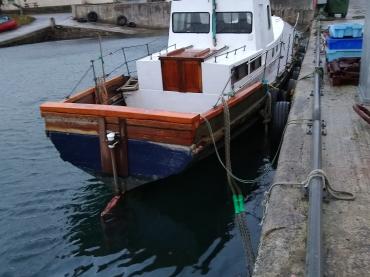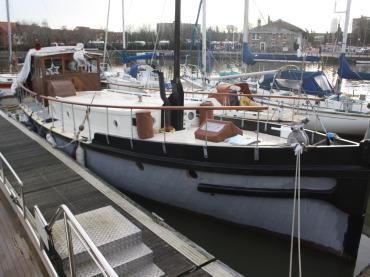

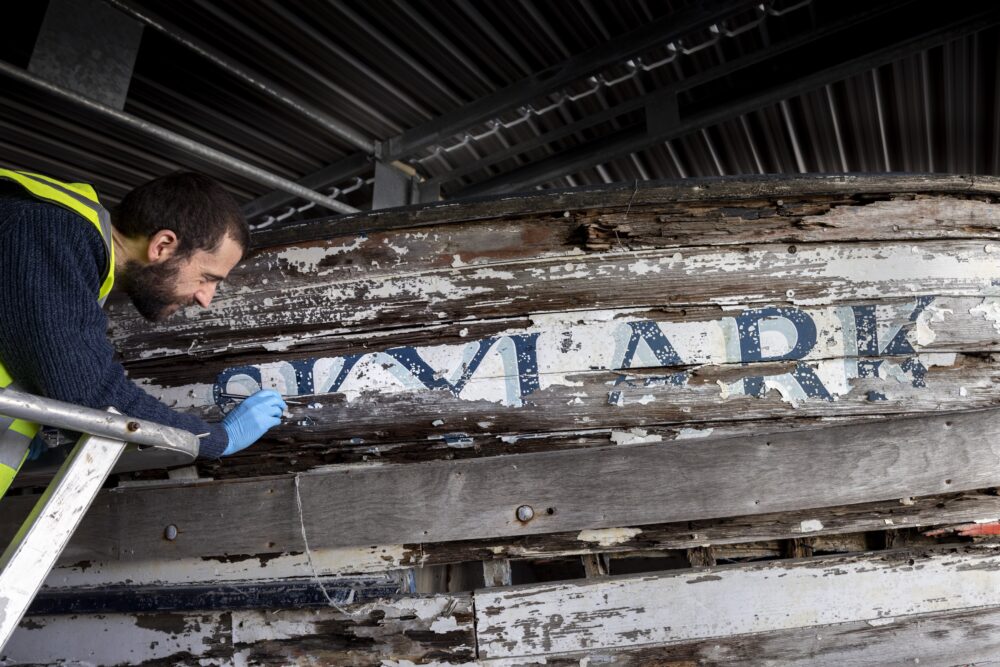
Details
Construction
Dimensions
History
SKYLARK IX was built by J Bolson of Poole in 1929 as a motor cruiser and is a wooden vessel of carvel construction.
During the Second World War she served as a shallow water minesweeper in Poole harbour and was engaged in placing anti invasion obstacles around the harbour. After the war the vessel gradually worked her way north via Morecambe and Burnt Island to Loch Lomond where she operated as a trip boat for 30 years. Eventually she was replaced, sold privately and fell into disrepair. In 2010 she sank at her moorings.
In October 2012, SKYLARK IX was re-floated and efforts are being made to get funding to lift her out of the water and into storage so progress can be made towards her restoration.
As of 2023, SKYLARK IX is undergoing restoration at the Scottish Maritime Museum's conservation workshop in Irvine, whilst the Skylark IX Recovery Trust shapes plans for her future at the heart of the new Spirit of Skylark Centre. Funding allowing, this proposed £3m heritage attraction, community hub and boatbuilding workshop will be located at the Museum’s second site in Dumbarton, and ensure a bright future for the vessel and the community projects, such as skiff building, she makes possible.
Significance
1. What is the vessel’s ability to demonstrate history in her physical fabric?
SKYLARK IX was built in 1929 by J. Bolson and Sons Ltd of Poole as a shallow water minesweeper. She is thought to have been part of a class of at least 10 vessels of the Skylark class built by J. Bolson and Sons Ltd. She is believed to be the last remaining vessel of her class. She is a wooden vessel of carvel construction, with a light framed construction using larch on oak. She was originally fitted with a single diesel engine. Some original materials are present on the vessel; however a large proportion now needs to be replaced. She was originally built with a single open plan deck with a small wheel house. However, this has been altered over the years with the addition of a passenger cabin for protection from the elements and seating for her role as a trip boat. After being sold privately she fell into disrepair, and in 2010 she sank at her moorings. She was later transported to the conservation boatyard at the Scottish Maritime Museum, Irvine, where she is awaiting reconstruction or restoration.
2. What are the vessel’s associational links for which there is no physical evidence?
SKYLARK IX has strong local, regional, national and international associations. During the Second World War she served as a shallow water minesweeper in Poole Harbour; she was engaged in placing anti-invasion obstacles around the harbour. She was subsequently used as a minesweeper at Minehead in Somerset, before being called up for service in Operation Dynamo, the evacuation of Dunkirk in 1940. SKYLARK IX rescued 600 men from Dunkirk, and she is thus both nationally and internationally significant. SKYLARK X was also at Dunkirk; however her current whereabouts and those of SKYLARKS I-VIII are unknown.
At the end of the Second World War in 1945 SKYLARK IX was sold off and slowly progressed northwards, being used as a day-trip vessel, first at Morecambe in Lancashire and later at Burntisland in Fife. She was then relocated to Portobello Pier, Edinburgh, and finally to Loch Lomond, north west of Glasgow, where she was operated as a trip boat by Sweeney Cruises for 30 years. Due to a family history of participation in Operation Dynamo, the operating company gave free trips to local veterans on Veterans’ Sunday every year. SKYLARK IX thus has regional significance for Scotland and substantial local significance for the Edinburgh and Loch Lomond areas. She has been registered on the National Register of Historic Vessels since 2012, and is also on the register of the Association of Dunkirk Little Ships.
3. How does the vessel’s shape or form combine and contribute to her function?
Despite currently being in a state of severe disrepair, SKYLARK IX maintains a pleasing and elegant profile and her overall appearance is well-balanced. Her primary function was as a shallow water minesweeper, and for this she was entirely fit for purpose. Although she retains her initial shape and lines, her post-war role as a day trip boat necessitated a range of adaptations including the addition of seating and a passenger cabin.
Being now located at the Scottish Maritime Museum, Irvine, SKYLARK IX is no longer in her working environment. In her current state she is unseaworthy but stable. She has been surveyed and consolidated to avoid further deterioration. A project to restore or reconstruct her is at the planning and fund-raising stage. The intention on completion of this work is to use her for trips on the River Clyde. There is interest from local schools in developing curricular resources based on her, and from Glasgow University who have plans to direct theses and dissertations about her.
Key dates
-
1929
Built by J Polson, Poole as a shallow water minesweeper
-
1941
Took part in the evacuation from Dunkirk in the Second World War
-
1950s/1990s
Operated as a cruise boat on Loch Lomond
-
2010
Vessel sunk at moorings
-
2012
Vessel refloated and awaiting funds for lifting out and restoration
Grants
-
29 November 2016
£423,300 awarded to the Skylark IX Recovery Trust from the Heritage Lottery Fund
Own this vessel?
If you are the owner of this vessel and would like to provide more details or updated information, please contact info@nationalhistoricships.org.uk

